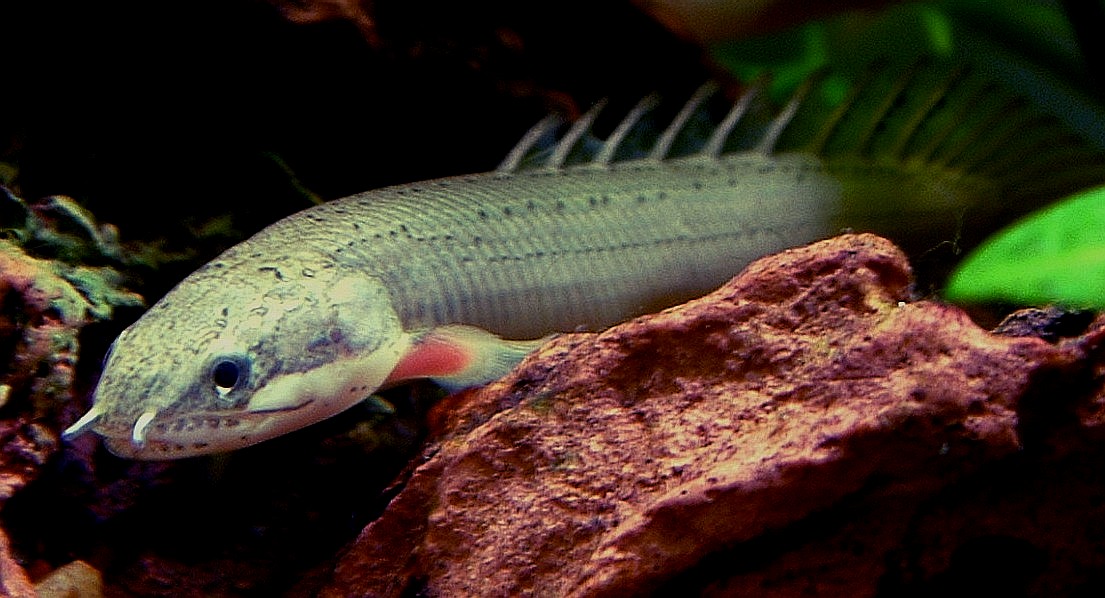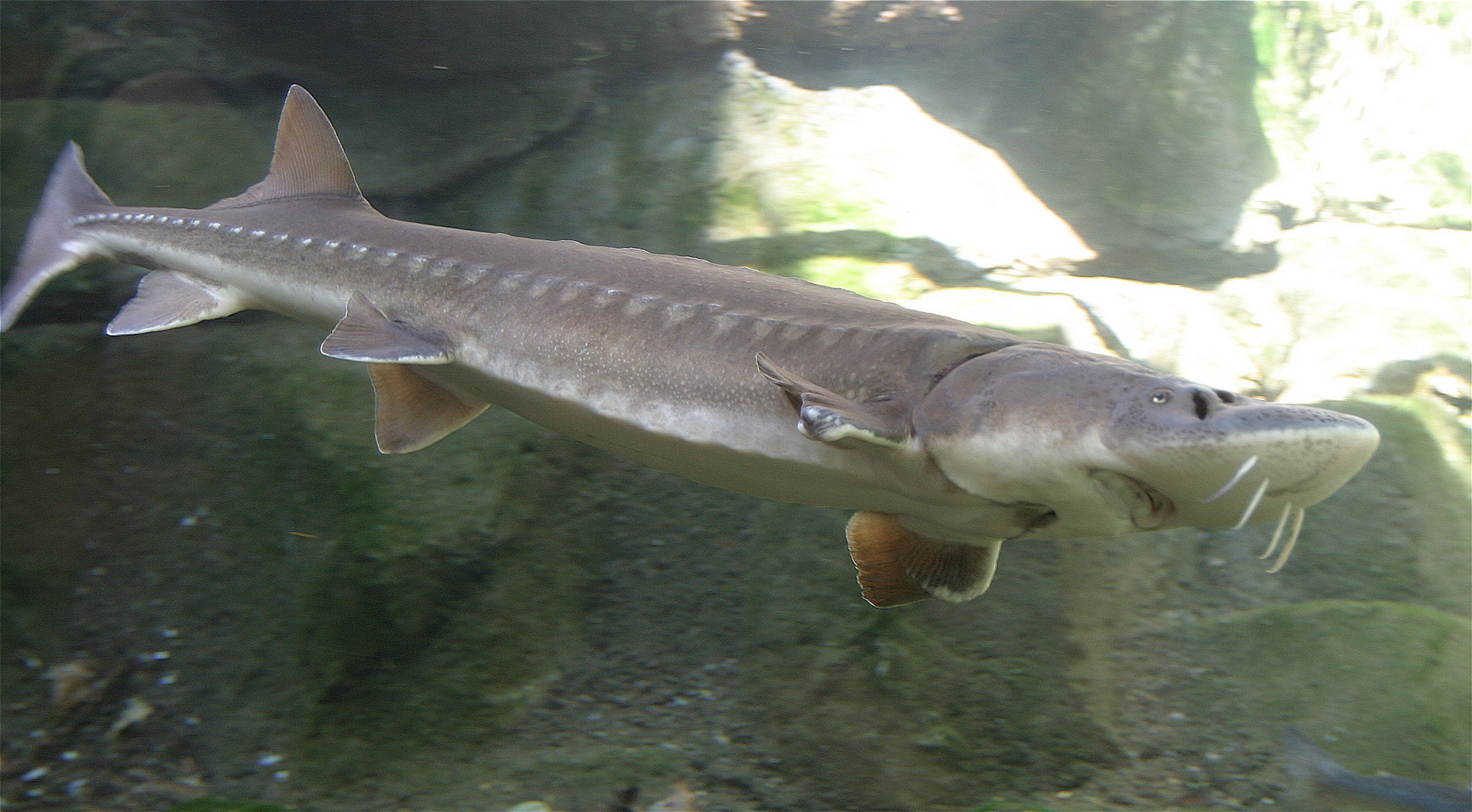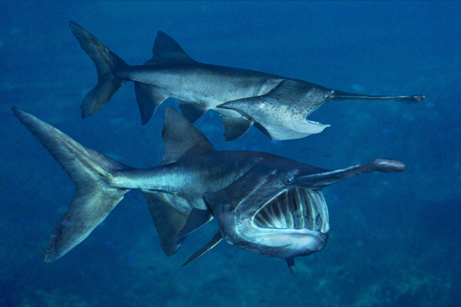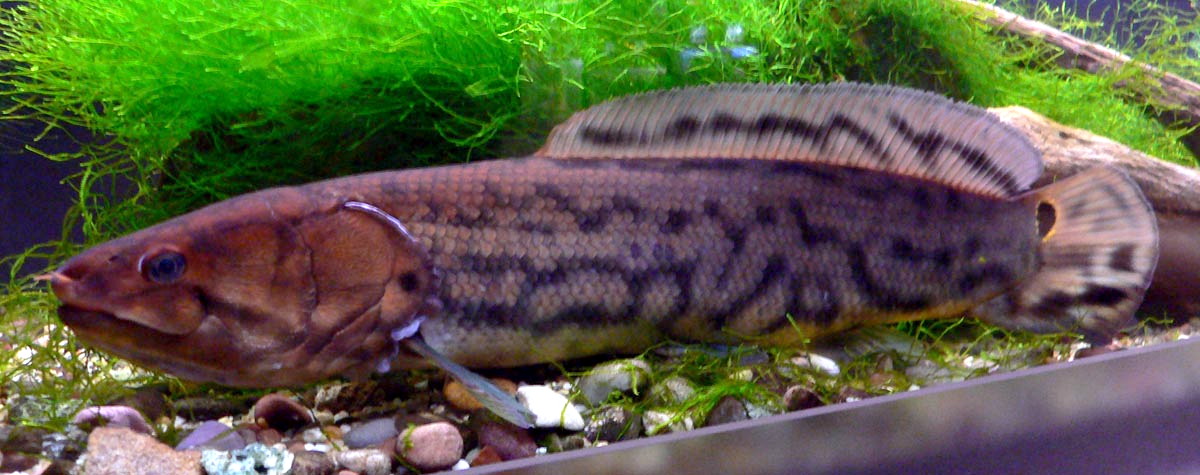Actinopterygii: Ray-Finned Fishes
635-980.jpg)
698-648.jpg)
The ray-finned fishes are named thusly because of their expandable fin rays. Sharks and rays have ceratotrichia, which give them an immovable fin. In contrast, ray-finned fishes have lepidotrichia, which are bony fin rays that allow them to open and close their fins. This can be observed in fishes that raise or lower their dorsal fins, or provide thrust with their pectoral and pelvic fins. However, the Sarcopterygians do have lepidotrichia, but they get their name from the lobe character of the fins. These fish reproduce externally by spawning, although there are some exceptions. This class makes up the majority of vertebrates.
SWIM BLADDER: This subject is a particular favorite of mine! I have done research on the subject of swim bladders during my time at Cornell. The swim bladder actually evolved as lungs, because it is easier to breathe air than it is water. These lungs developed in the common ancestor of Actinopterygians and Sarcopterygians, but were adapted into swimbladders for buoyancy purposes. The swim bladder maintains neutral buoyancy, allowing a fish to maintain its position in the water column without expending energy.
PHYSOSTOMOUS: The physostomous, or open, condition is found in basal Actinopterygians. Physostomes have a connection between their swim bladder and their gut tube, which allows them to "inhale" air from the surface into their bladder to inflate it and "burp" the air out of their bladder to deflate it. This condition mirrors that of lungs, because both are connected to the digestive system in one form or another. Some Actinopterygians still use their bladder for respiration. The connecting tube is known as the ductus pneumaticus.
PHYSOCLISTOUS: The physoclistous, or closed, condition is found in derived Actinopterygians. The swim bladder is not connected to the gut in any way; it is "closed" from the gut. So how does the fish inflate/deflate their organ? There is a network of capillaries attached to the bladder, known as the rete mirable. There are specialized cells connected to the bladder that produce lactic acid, which causes oxygen to dissociate from the red blood cells. This causes the pressure of oxygen in the capillaries to drastically increase, becoming higher than the pressure within the bladder. Oxygen will eventually diffuse into the bladder, a system which works even when the fish is found at high pressures. Pressure is released through a window known as the ovale. Because these fish do not need to go to the surface to fill their swim bladder, they are able to reach much deeper depths than physostomes, who are limited by their proximity to the surface.

Cladistia: Bichirs
There is one order (Polypteriformes) and one family (Polypteridae). The name means "many finned," and comes from the presence of multiple dorsal finlets on the back of the fish. These fishes have paired lungs which they use for breathing air, and have ganoid scales (made of ganoine). Skeletal features and their lobe-finned pectoral fins have made some scientists believe that they are actually Sarcopterygians, but for now they remain as the first group in Actinopterygii.
Chondrostei
Contains one extant order, Acipenseriformes. They receive their name from their cartilagenous skeleton, a case of convergent evolution with the Chondrichthyans, in addition to having a highly heterocercal tail.

Acipenseridae: Sturgeons
These large fish are identifiable because of the rows of bony scutes along their back and sides, along with the four barbels protruding in front of their mouths. Sturgeons are especially well-known for producing caviar, which are the eggs of the female. The most famous of the caviar sturgeons, the beluga (Huso huso) is also considered the largest freshwater fish. The swimbladder of the sturgeon is used to produce isinglass, a clarifying agent for wines.

Polyodontidae: Paddlefishes
The paddlefish is even more identifiable than the sturgeon due to its elongated rostrum, aptly described as a "paddle." This rostrum is covered with electroreceptors to help the paddlefish find food, although it is a filter-feeder, eating plankton. The paddle may help in this regard to provide aerodynamic lift for the fish.
Neopterygii
The Neopterygians have lost the extremely useful sense of electroreception, although it has been re-evolved in a few species of catfishes. There are changes in the fin and skull structure, developments which have allowed the Neopterygians to move faster and become more efficient predators. This is what has led them to become the dominant group of vertebrates.


Lepisosteiformes: Gars
There is only one family (Lepisosteidae) in this order. These fishes have elongated bodies and jaws, with needle-like teeth and heavy ganoid scales. Unlike many other fish with elongated jaws, the nostrils are found on the end of the upper jaw. The dorsal fin is placed closed to the tail, a feature indicative of an ambush lifestyle. They can use their swim bladder for respiration. The Alligator Gar, (Atractosteus spatula) grows extremely large and is quite a scary fish.

Amiiformes: Bowfins
There is one family (Amiidae) and one species (Amia calva) that is still living in this order. This species is identified by its singular dorsal fin which runs all the way along the back, along with the presence of a gular plate (bony region on the lower jaw). They have cycloid scales, one of the indications of a transition to the teleost bodyplan.
Teleostei
Now that we have excluded a few more fishes, the Teleosts are still the largest group of fishes, containing the majority of species. The most exciting feature is the presence of a mobile premaxilla, a feature that allows the fish to protrude its jaws forward. The fish produces negative pressure within its mouth, creating a suction force which vacuums its food into its mouth. Teleosts also have a homocercal tail, which means that the upper and lower lobes are approximately the same size.